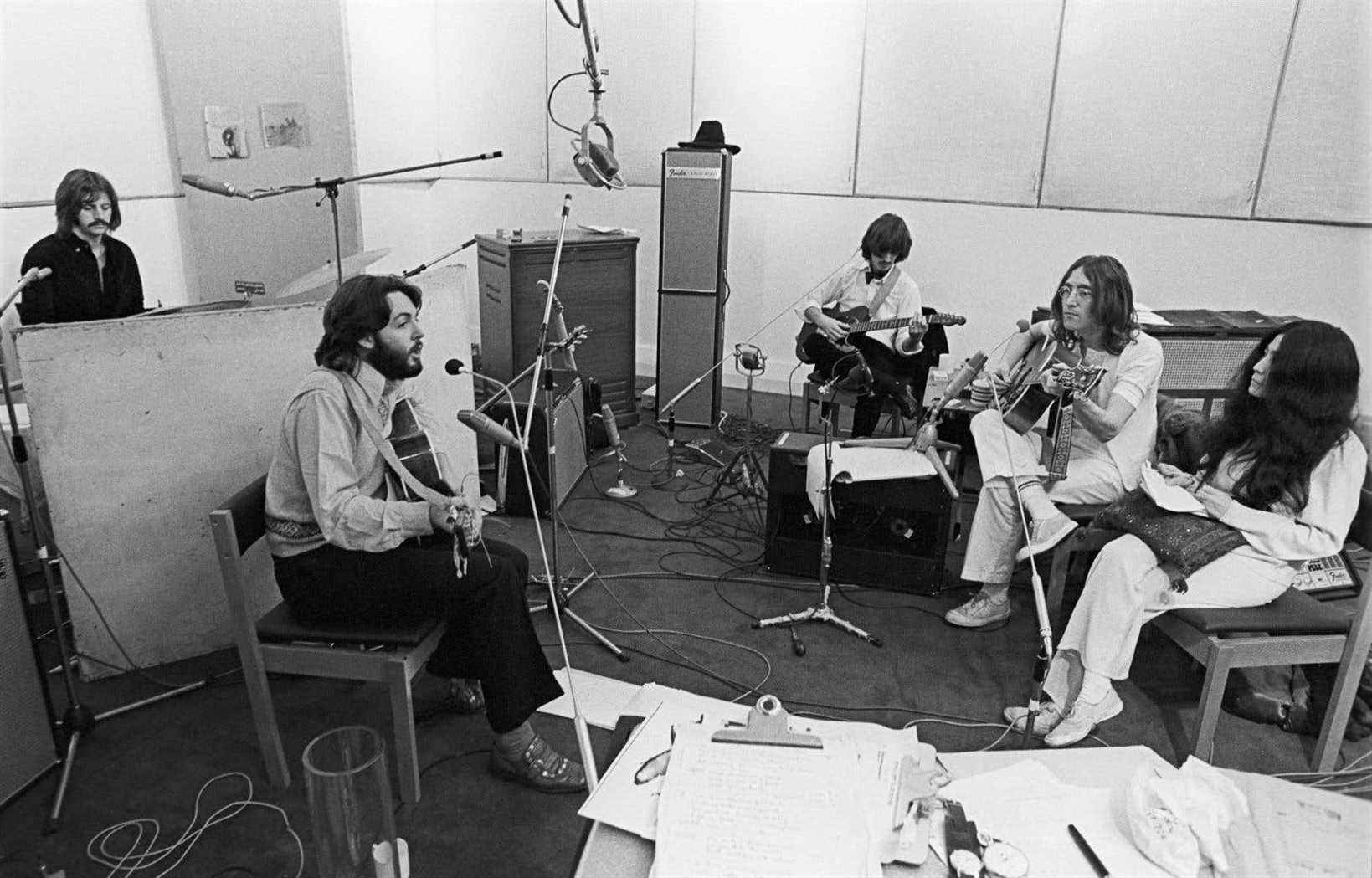The six-disc box set Let It Be, planned for the 50e anniversary of the album of the same name, in 2020, finally arrives in stores, a few weeks before the broadcast at Disney + of the six hours of the documentary series Get back by Peter Jackson. The culmination of half a century of controversy, between revisionism and rehabilitation. Let it be, the 1970 film and album, remains the unloved episode of The Beatles’ fabulous adventure.
All because of the Picasso mystery. The 1956 documentary in which Clouzot films Pablo in the midst of an inspired gesture, the work taking shape, from the first line to the last. Paul McCartney suggested at the end of 1968 to similarly capture the Beatles creating new songs, from start to finish, and then perform them in an unusual place. Big order, big constraint: January 1969 was allocated, not a day more, Ringo Starr being requisitioned for the shooting of the film The Magic Christian, with Peter Sellers.
The bad good idea
For practical reasons, we flanked the group in the cavernous sound traineeship already rented for the film. Cold place, too much echo, empty, daytime schedule not rock’n’roll. “Hell,” John Lennon spat to anyone who wanted to hear it. The most miserable sessions on Earth! Disgusted, George Harrison left the group halfway. Then came back, but on condition that it was in the basement of the Apple building, the Beatles company, in a studio ad hoc. Where everything went much better. Hell is always more memorable than Heaven.
“We always talk about these sessions as the moment when everything shatters to pieces, but in reality, it is a reunion that takes place, supports Giles Martin. The Beatles are like an old couple trying to date each other again. “By giving yourself trouble …” Yes, it was originally a very bad idea, badly planned. That the Beatles got away with so many songs, and a solid performance on the Apple roof, is a miracle, and more a testament to their rallying strength in the face of adversity than to an ongoing disintegration. “
Giles Martin, son of Sir George Martin. On the computer screen. In previous interviews, for his remixing of Sgt. Pepper, white album,Abbey Road, the voice on the phone was already shivering. In Zoom, the impact is increased tenfold: the Martins’ head posture, the thoughtful gaze, the engaging smile with a touch of mischief in the corner, son Giles really has everything fatherly, the great director of all the Beatles albums. Except Let it be. “I try to do justice to the work of Glyn Johns, who was de facto the director on site during the sessions, and also my father’s contribution… without forgetting that I had to remix the album as it appeared. Phil Spector’s. “
A fragile wall
Phil Spector: sir ” Wall of Sound », Celebrated for a string of immortelles and his way of recording« wall to wall », based on saturation and overflow. ” Produced by George Martin, overproduced by Phil Spector “, Had summed up the father, recalls Giles. There is a sort of inherent justice in the fact that a Martin presided over the remix. Discreet pride. “Remastering is like polishing the body. To remix is to take everything apart and reassemble everything. In Spector’s case, it’s tearing down a wall and, brick by brick, rebuilding it. A rather fragile wall, to tell the truth. I knew it a little, I had remixed Wah-Wah, All Things Must Pass and some other Spector productions for Martin Scorsese’s documentary on George Harrison, Living in the Material World. My observation: if we try to separate the tracks too much, the wall crumbles. I must have done at least seven mixes for The Long and Winding Road… ”
His work can be compared to that of Glyn Johns, who offered the Beatles four states on a record that was first to be titled Get Back with Don’t Let Me Down and Nine Other Songs, imitating the invoice of the very first Beatles album (in a more hairy version). All versions rejected, all available in bootlegsfor decades, and in a staggering quantity: the box Day by day contains 38 double discs! We can thus weigh the merits of what is or should be on discs 2 and 3 of the box set, devoted to Apple Sessions and to Rehearsals and Apple Jams.
“Everyone has their list. Why not include the performance of the entire roof, I am asked? Wait until you see the Peter Jackson movie, it’s so much better! My goal was to give the remixed album, and interesting sketches, to the general public. The fans who claim everything already have everything! “
Scenes of married life
In May 1970, when the record Let it be appeared and the film of the same name hit theaters, the Beatles were officially separated: Paul had just let go, some eight months after John’s internal “divorce”. Everyone had agreed to keep it quiet and wait until afterLet It Be to depress the planet. The same Paul was telling the British press just last week that John was the culprit, not him. Global media turmoil. 51-year-old revelation, however: John had unpacked everything at Rolling Stone in December 1970.
My goal was to give the remixed album, and interesting sketches, to the general public. The “fans” who demand everything already have everything!
“The Beatles talk about the end of the Beatles during the sessions. But do not separate: they continue. And the idea of solo albums was also in the air from January 1969. The intention was, once everyone’s plans had come to fruition, to continue as the Beatles. But I believe it was not possible. They couldn’t have extramarital affairs without consequences. Either they were married and the four of them were in the same bed, or they weren’t The Beatles anymore. “
